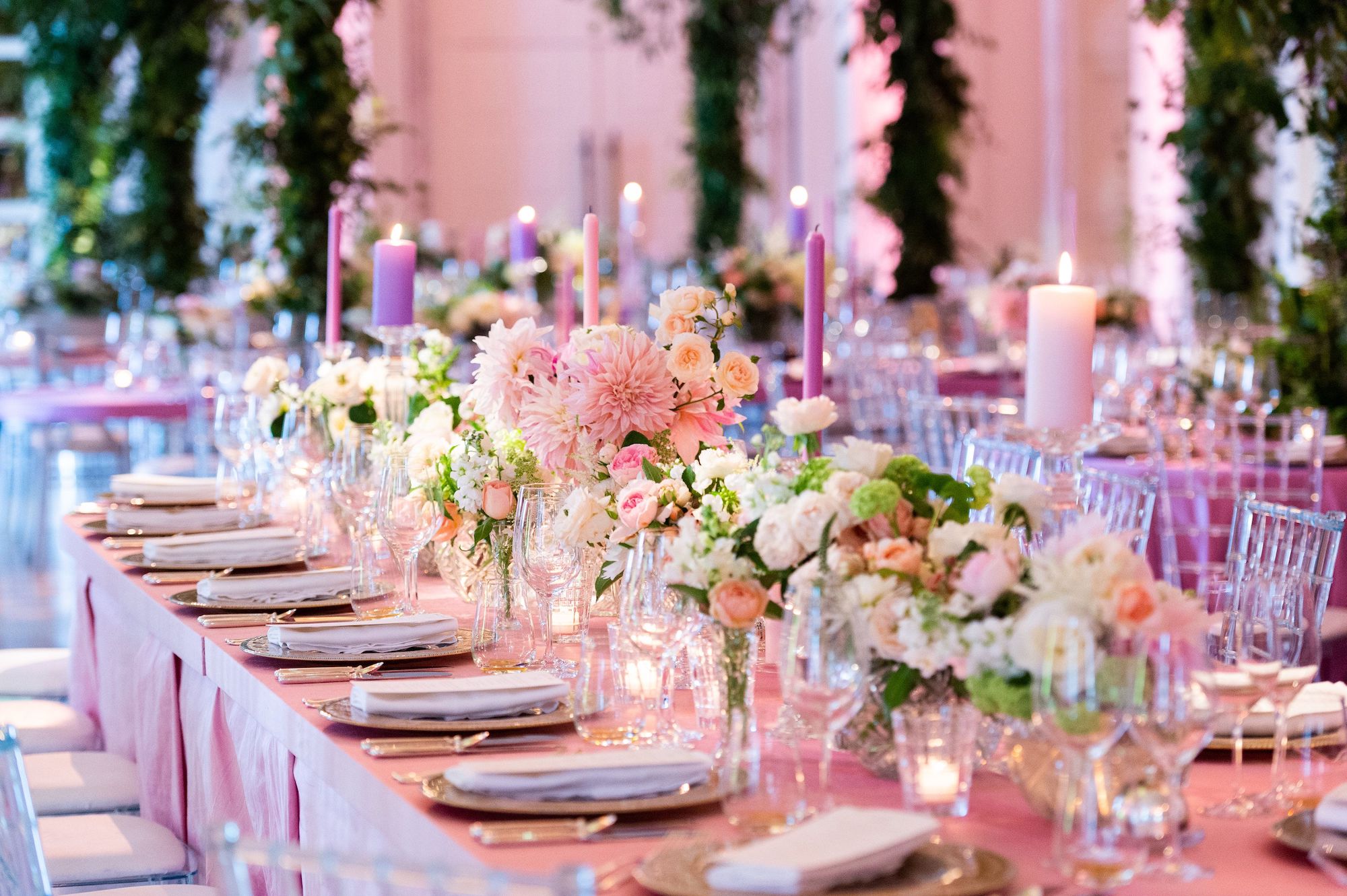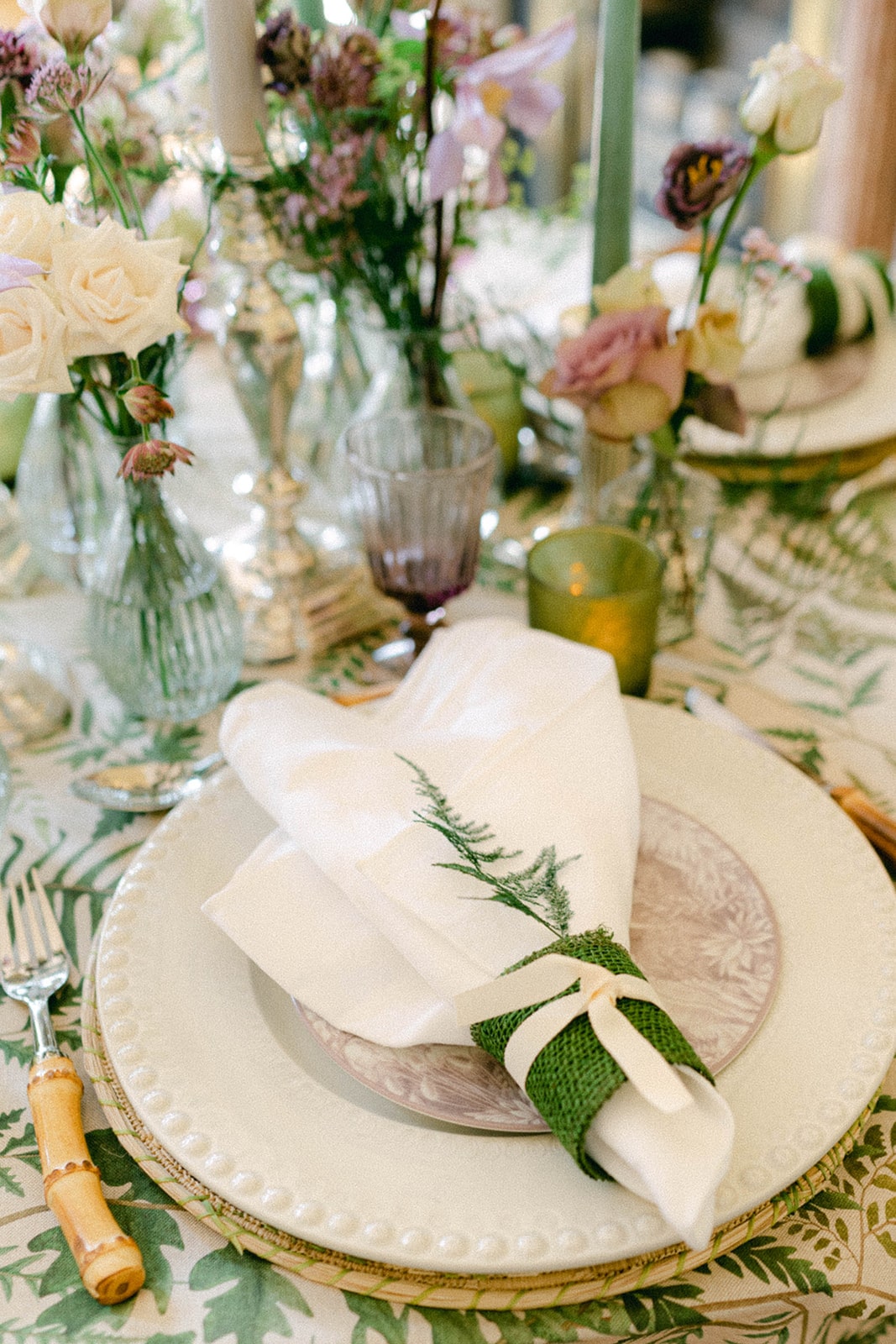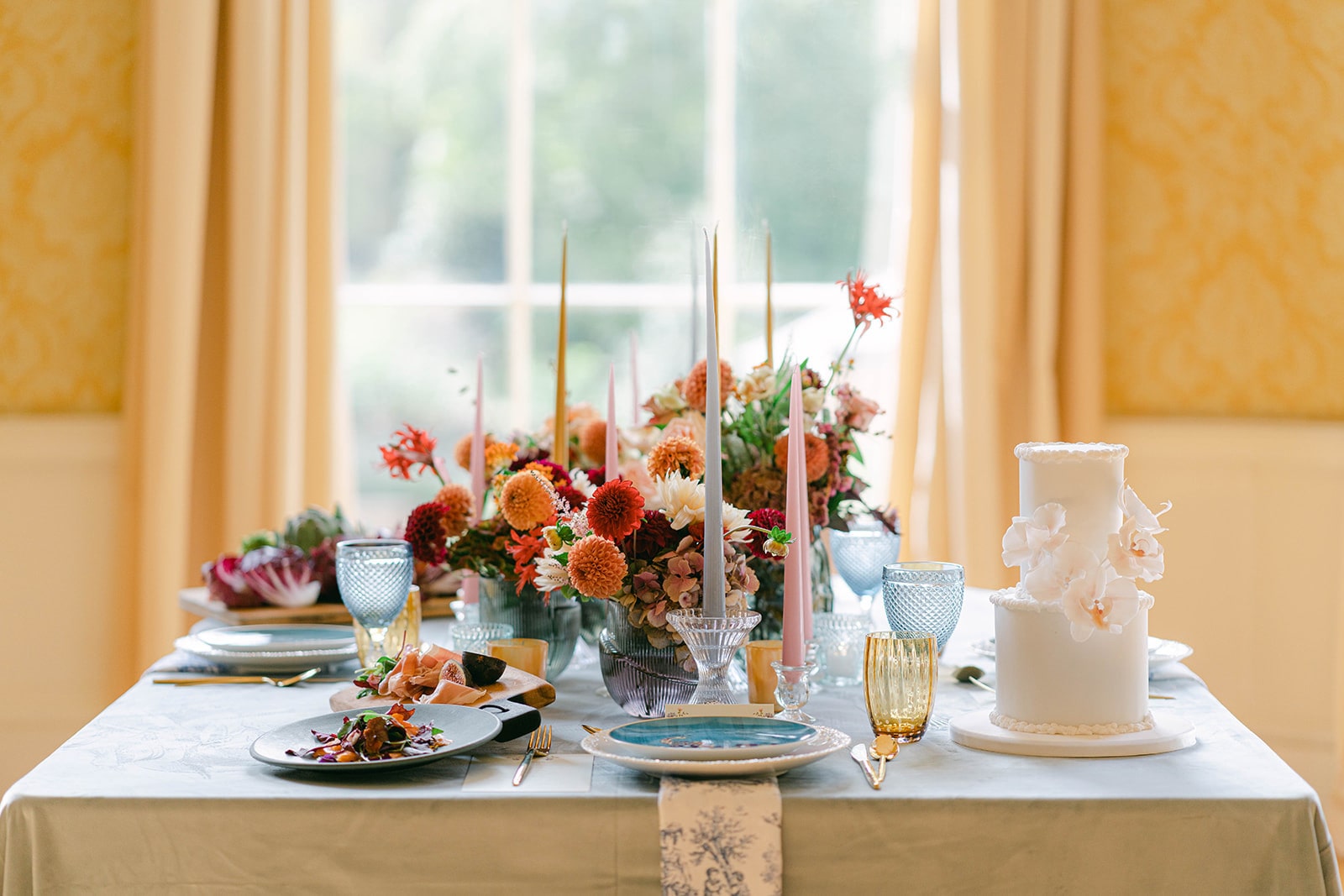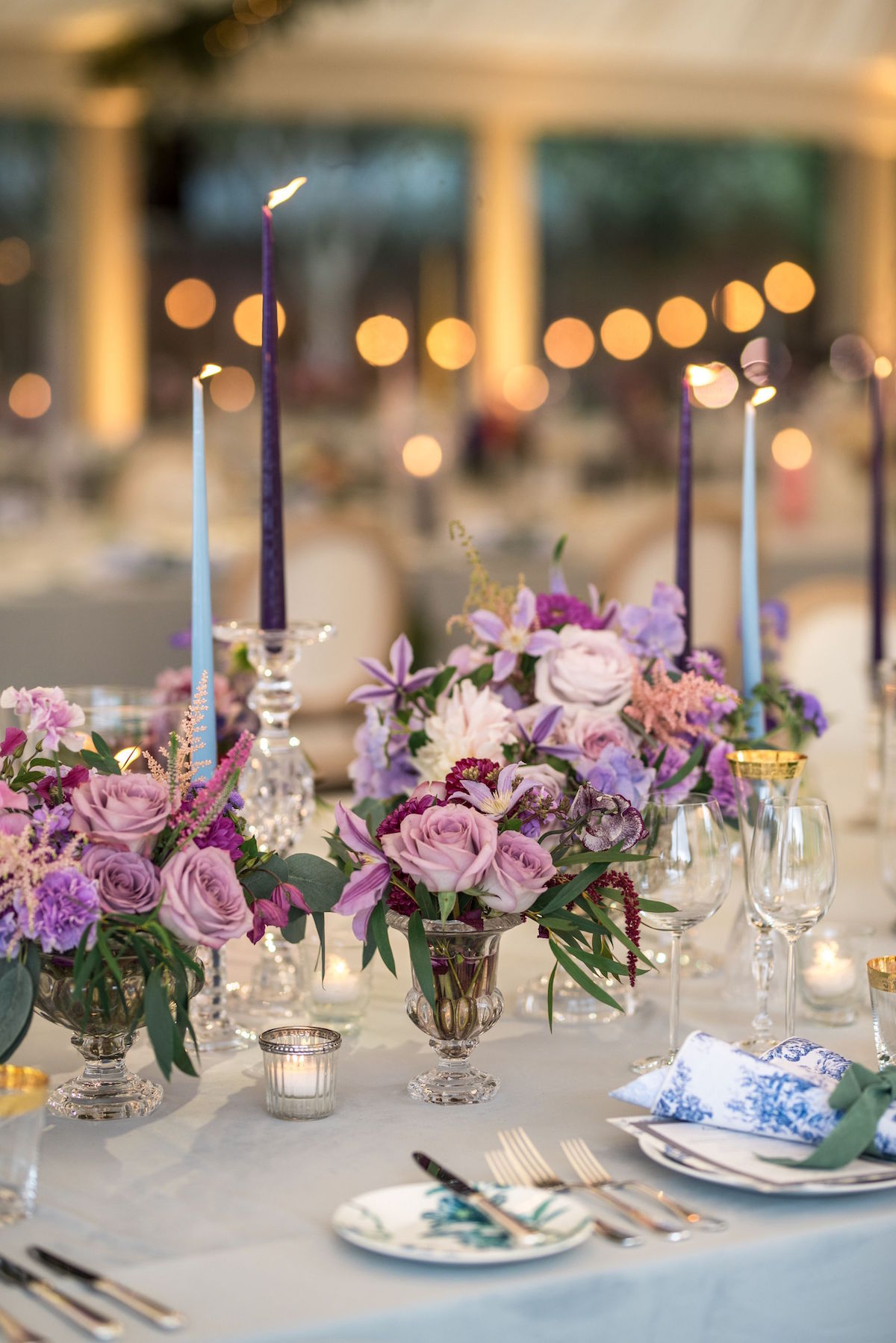
How to Set a Wedding Tabletop
“Details create the big picture,” said Sanford I. Weill. That’s certainly true when it comes to your wedding design, especially that of the tabletop at your reception. An innovative tabletop design will really make your wedding stand out, whether it’s through a unique colour palette, unexpected shapes and textures, creative stationery, gorgeous florals, or personal elements. But before you can get creative, it’s important to have a complete understanding of the basics – the building blocks of how to set a wedding tabletop. Whether your setting will be formal, casual, or somewhere in between, here’s everything you need to know about how to set a wedding tabletop that will wow your guests.
Here are the most important elements to consider.
Linens
Think of linens as the base of your wedding tabletop setting. They create a backdrop for all the other elements. Wedding linens typically include tablecloths, table runners, and napkins. These can match or be complementary, which can add additional dimension to the design. You can keep them clean and classic with fine white linen tablecloths or introduce colour, pattern, or texture through different types of fabric. (For example, velvet tablecloths for a winter wedding, a raffia runner for a tropical destination wedding, or an airy silk runner to add romance to a formal tabletop.) Another option is to have a raw wooden table without a tablecloth or runner if you want to create a rustic effect. (In this case, it’s the absence of linens that makes the statement!) Whatever effect you want to create, linens are one of the best ways to add colour and personality to your design.

Place Settings
The place settings are where a lot of the formality of your tabletop will come into play, as it reflects the food service style you have chosen. For example, a traditional sit-down meal might have a formal setting with a strictly symmetrical layout and the full range of utensils. On the other hand, a buffet setting will not have a plate (since this will typically be on the buffet table) and sometimes will not have cutlery either, for the same reason. The basic elements of your place setting will often be provided by your venue. However, you may want to bring in alternative pieces to change up the overall look and match it to your colour scheme or theme.
Place settings generally include the following:
- Chargers – A plate that is larger than a standard dinner plate and is used primarily as a decorative element. Chargers are a great way to add colour and personality, especially since they stay on the table as different courses come and go. They are usually removed when the dinner course is served.
- Crockery – Plates that are usually used on a wedding tabletop are dinner plates, salad plates, and bread (or side) plates. Depending on the food served, other bowls and platters may also be added.
- Cutlery – An informal place setting will usually just have a dinner knife and fork, a salad knife and fork, a soup spoon and a dessert spoon. However, you may also have additional utensils, such as a fish knife and fork, dessert fork, etc. The rule is that you should only include cutlery that will be used. The other important thing to note in a formal place setting is that utensils are arranged in the order guests will use them, working from the outside in. Cutlery can be another way to add a unique touch. For example, black or matte gold flatware for a modern design or vintage cutlery for an elevated, old world feel.
- Glassware – Glasses should always go above the knives on the upper right of the place setting. Depending on formality, you might include water, red wine, white wine, and champagne glasses. Again, glasses can be used to add personality, tone, and even colour to your tabletop design!

Centrepieces
Next is one of my favourite parts of tabletop styling, the flowers! There are SO many options, from elaborate tall arrangements to blooms in individual bud vases and low, structured designs. Depending on your theme, you can also get creative with the vessels you use, as well as additions like fruit, feathers, foliage, dried pods and grasses, branches, and so on.
Stationery
Your tabletop stationery can be as simple or as elaborate as you like. Some of the key elements are menus (one per table or one per guest), place cards, and table name/number cards. You can also add in personal elements, such as conversation starter cards or activity packs for children. Handdrawn calligraphy is always a gorgeous addition and can be used to turn anything from ribbons and tags to shells and geodes into place ‘cards’ that reflect your wedding style.

Candles
Whether you have low pillar candles, decorative votive or hurricane lamps, or traditional candelabras with tall taper candles, they’re sure to add personality (and sometimes, scent or colour) to your table. Some venues don’t allow candles, but a similar cosy ambience can be created in other ways, especially with creative lighting.
Favours
Favours are a great way to show appreciation for your guests, but they can also be a cute way to add visual interest or a thematic element to your table! Place them on top of guests’ plates or beside their place cards for the most impact.
Of course, there’s more to how to set a wedding tabletop than just knowing which elements go into the design. But this is the very best place to start! Next, let your creativity run wild and see where it takes you!
Slán go Fóill,
Tara
Images by Fred Marigaux, Story of Eve, Doreen Kilfeather, DK Photography




